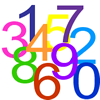Skip over navigation






Or search by topic
Number and algebra
Geometry and measure
Probability and statistics
Working mathematically
Advanced mathematics
For younger learners
Graph Theory and Networks
 The resources in this feature are designed as an introduction to the world of graph theory and networks, which has many real life applications. You don't need any prior knowledge, so jump in and have a play, and see what theorems you can
discover!
The resources in this feature are designed as an introduction to the world of graph theory and networks, which has many real life applications. You don't need any prior knowledge, so jump in and have a play, and see what theorems you can
discover!
You can also discover more about networks in these Plus articles.
The Bridges of Konigsberg
Age 11 to 18
Challenge Level 





Investigate how networks can be used to solve a problem for the 18th Century inhabitants of Konigsberg.
Network Trees
Age 14 to 18
Challenge Level 





Explore some of the different types of network, and prove a result about network trees.
Euler Meets Schlegel
Age 16 to 18
Challenge Level 





Discover how networks can be used to prove Euler's Polyhedron formula.
If I Share, Will My Friends Share Too?
Age 11 to 18
Read about how mathematicians used network theory to predict the spread of disease among teenagers.
You may also like
Making Sense of Statistics
This collection of problems has been put together to help you to explore and understand important ideas in statistics.
Integration as Area
These problems invite you to explore integration as area, and use area integrals to solve problems.

